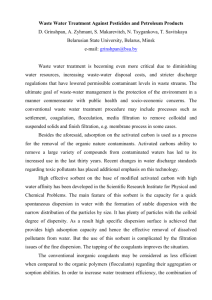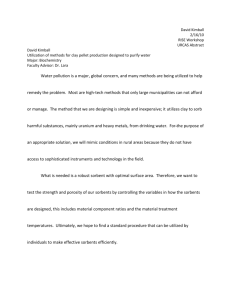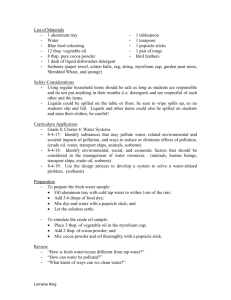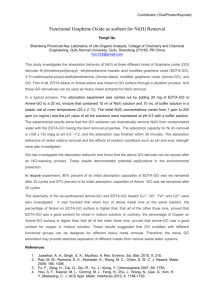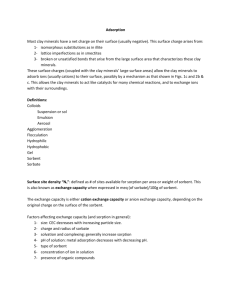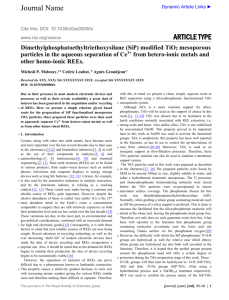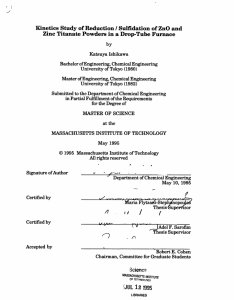УДК 735.29.(32) «UNIPOLIMER» SORBENTS FOR OIL SPILLS
advertisement
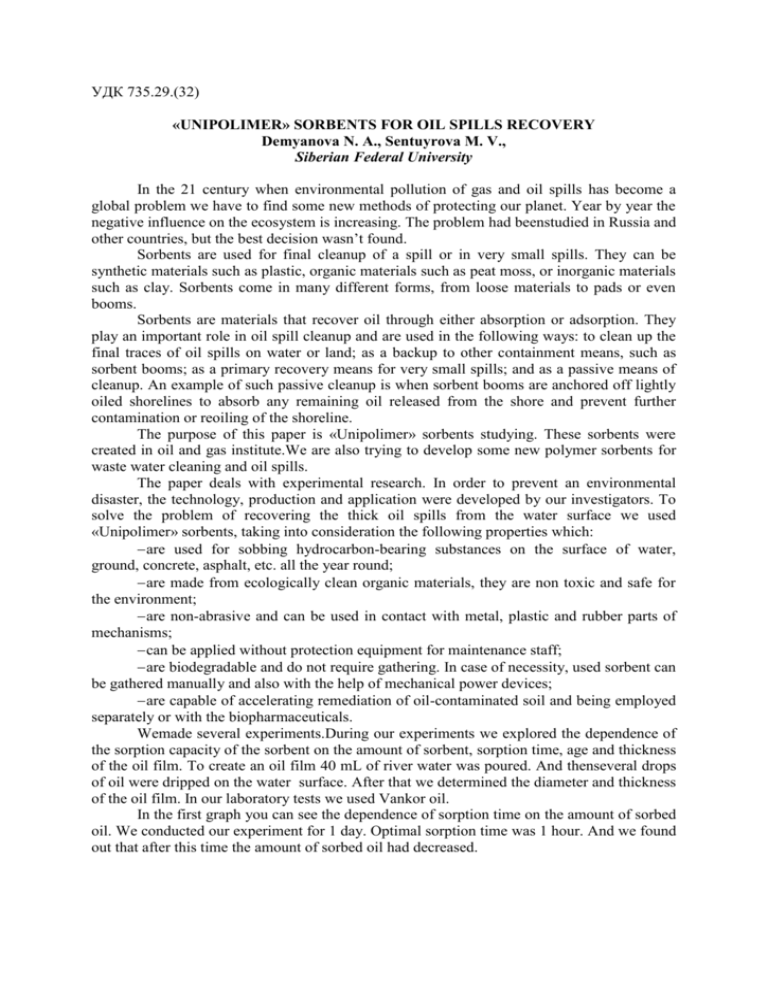
УДК 735.29.(32) «UNIPOLIMER» SORBENTS FOR OIL SPILLS RECOVERY Demyanova N. A., Sentuyrova M. V., Siberian Federal University In the 21 century when environmental pollution of gas and oil spills has become a global problem we have to find some new methods of protecting our planet. Year by year the negative influence on the ecosystem is increasing. The problem had beenstudied in Russia and other countries, but the best decision wasn’t found. Sorbents are used for final cleanup of a spill or in very small spills. They can be synthetic materials such as plastic, organic materials such as peat moss, or inorganic materials such as clay. Sorbents come in many different forms, from loose materials to pads or even booms. Sorbents are materials that recover oil through either absorption or adsorption. They play an important role in oil spill cleanup and are used in the following ways: to clean up the final traces of oil spills on water or land; as a backup to other containment means, such as sorbent booms; as a primary recovery means for very small spills; and as a passive means of cleanup. An example of such passive cleanup is when sorbent booms are anchored off lightly oiled shorelines to absorb any remaining oil released from the shore and prevent further contamination or reoiling of the shoreline. The purpose of this paper is «Unipolimer» sorbents studying. These sorbents were created in oil and gas institute.We are also trying to develop some new polymer sorbents for waste water cleaning and oil spills. The paper deals with experimental research. In order to prevent an environmental disaster, the technology, production and application were developed by our investigators. To solve the problem of recovering the thick oil spills from the water surface we used «Unipolimer» sorbents, taking into consideration the following properties which: are used for sobbing hydrocarbon-bearing substances on the surface of water, ground, concrete, asphalt, etc. all the year round; are made from ecologically clean organic materials, they are non toxic and safe for the environment; are non-abrasive and can be used in contact with metal, plastic and rubber parts of mechanisms; can be applied without protection equipment for maintenance staff; are biodegradable and do not require gathering. In case of necessity, used sorbent can be gathered manually and also with the help of mechanical power devices; are capable of accelerating remediation of oil-contaminated soil and being employed separately or with the biopharmaceuticals. Wemade several experiments.During our experiments we explored the dependence of the sorption capacity of the sorbent on the amount of sorbent, sorption time, age and thickness of the oil film. To create an oil film 40 mL of river water was poured. And thenseveral drops of oil were dripped on the water surface. After that we determined the diameter and thickness of the oil film. In our laboratory tests we used Vankor oil. In the first graph you can see the dependence of sorption time on the amount of sorbed oil. We conducted our experiment for 1 day. Optimal sorption time was 1 hour. And we found out that after this time the amount of sorbed oil had decreased. Amount of sorbed oil, g Оptimal sorption time 0.16 0.15 0.14 0.13 0.12 0.11 Sorption time Amount of sorbed oil, g In the next graph you can see the dependence of the amount of sorbent on the amount of sorbed oil. The greater the amount of sorbent the greater the amount of sorbed oil is. Optimal amount of sorbent 0.155 0.15 0.145 0.14 0.135 0.13 0.125 0.12 0.115 0.02 0.04 0.06 0.08 0.1 Amount of sorbent, g In this graph you can see the dependence of thickness of the oil film on the amount of sorbed oil. Absorptive capacity of the sorbent increases when weincreasethe oil film thickness. Amount of sorbed oil, g Absorptive capacity of the sorbent 0.8 0.6 0.4 0.2 0 0.1 0.2 0.3 0.4 0.5 Thickness of the oil film, mm 0.6 In this last graph you can see the dependence of age of the oil film on the amount of sorbed oil. We have done 4 measurements: 0.5 day, 1 day, 1.5 day, 2 days.The amount of sorbed oil decreases when age of the oil film increases. Amount of sorbed oil, g Age of the oil film 0.14 0.12 0.1 0.08 0.06 0.04 0.02 0 0,5суток 1сутки 1,5суток 2суток Age of the oil film, day We have already received initial results of experiments and we are planning to continue our work further.The following step of our research is the comparison of different sorbents for oil slicks removal. References 1. Fingas, M. The basics of oil spill cleanup / M. Fingas. – CRC Press, 2013.
